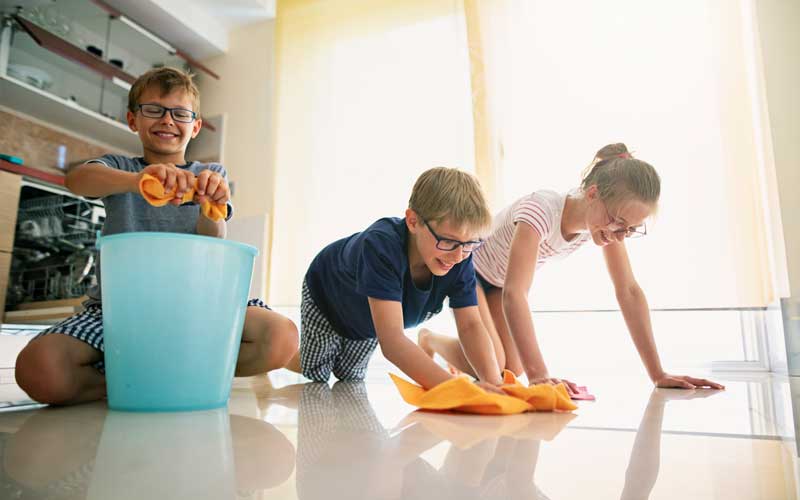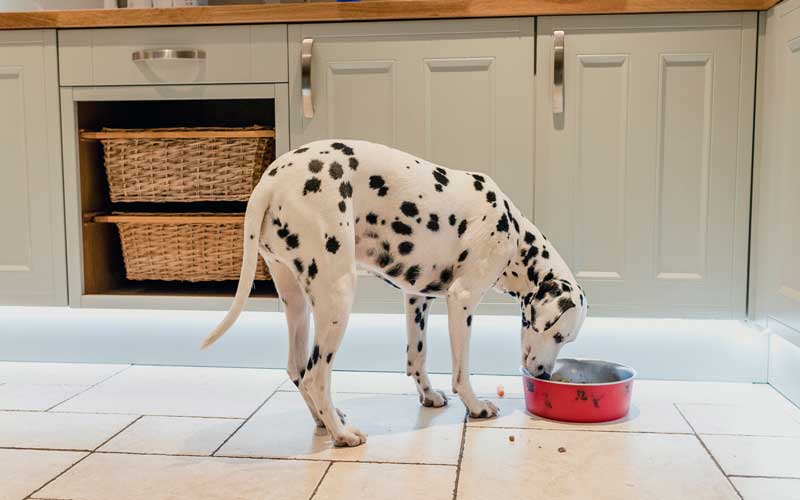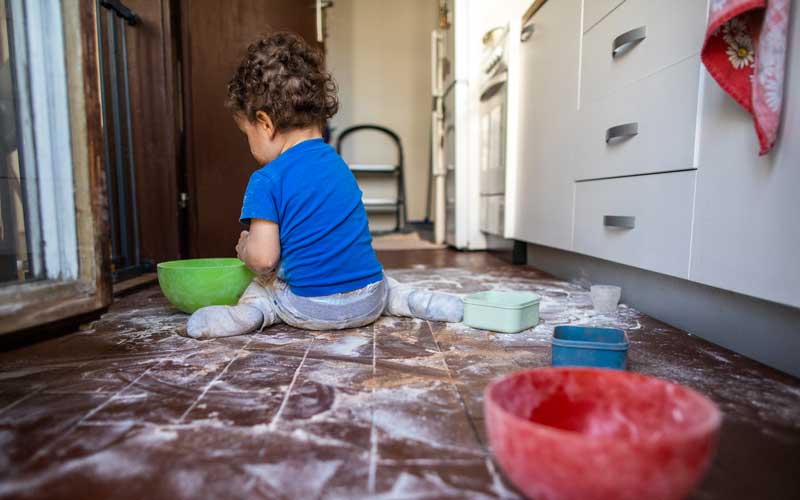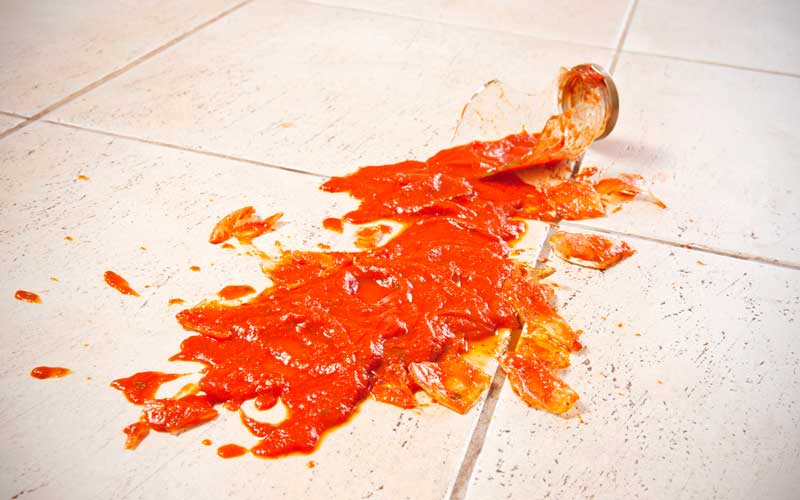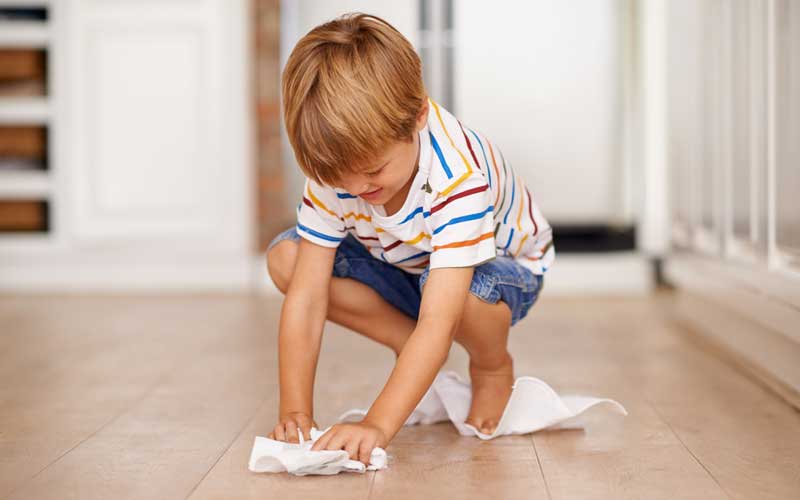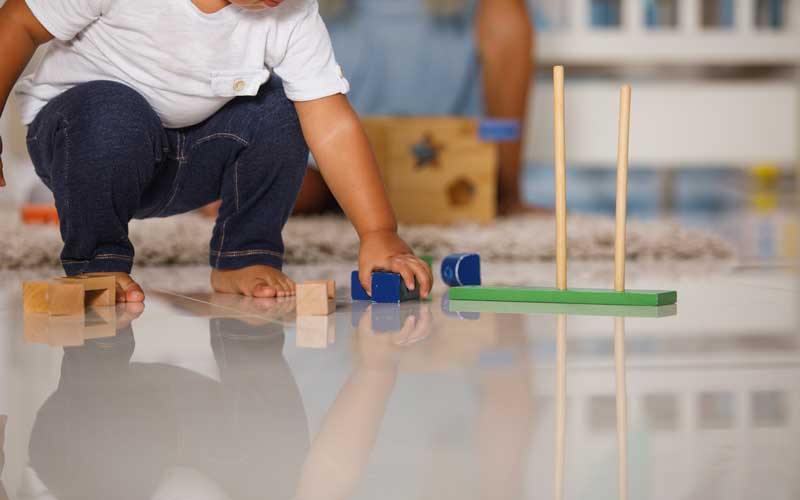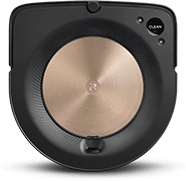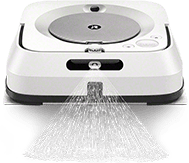How To Clean Tile Floors Like a Champ
Let’s face it, with the great shift to working from home and sometimes homeschooling our tiny, sticky humans (or romping around more with our fur babies), our tile floors are being put through the wringer.
And you always think you’ve cleaned them until you walk barefoot across them. Or until the light catches it just right and you realize there’s a milky residue coating them. Yuck! Or how about cleaning tile grout…impossible, right? Even after you sat on your knees scrubbing with a toothbrush for hours, it still doesn’t look as good as when the floor was first grouted.
Thinking about hiring a cleaning services professional? A commercial cleaner may apply a special solution (or cleaning agent) to loosen the dirt from your tile and grout lines (a pretreatment), then use a hydraulic brush to deep clean. Then, they’ll suction the dirty water and dirt into a hose that flows into their truck for disposal. Finally, they’ll charge you hundreds (or even thousands!) of dollars, depending on where you live and how many square feet of tile flooring you have. So, what is the best way to clean tile floors without emptying your bank account?
If you want your floors clean and sparkling, with minimal effort, then read on for powerful cleaning tips. We’ll break down how to easily clean tile floors with various methods, for various tiles, below.
How to Clean Ceramic Tile Floors (or Porcelain Tile Floors)
The most common way to clean ceramic or porcelain tile flooring is to dilute some cleaning solution with warm water and run a sponge mop over it.
If that’s all your floors need, then a basic cleaning looks like this:
- Sweep the tile (or vacuum if you have a vacuum that works well on non-carpet surfaces)
- Use a steam mop, or a sponge mop and your favorite tile floor cleaner (or mild detergent)with small and even strokes over the tiles
- Change the water regularly, to ensure that you’re only using clean water on the tiles
- Let air dry
As a low-maintenance way to keep your tiles clean, you’ll want to perform this every other day or once a week.
But if you’re moving into a new house or apartment, or you’ve recently done some home improvements (bathroom or kitchen renovations), or there’s just a lot of buildup on your tiles, you probably want a deeper clean than this.
The method and type of floor cleaner you use depend entirely on the level of grime and residue build-up you have on the tile, and whether or not you want to clean the grout as well as the tile itself.
Here are some of the best ways to clean tile floors and grout.
Method 1: The deep degreaser method for washing tile floors
Sometimes, elbow grease and a regular cleaning solution, or all-purpose cleaner, just aren’t enough. If you have deep or embedded dirt (common for those textured tiles), you will need a heavier cleaner and some time to let it sit.
There are certain cleaners specifically designed to clean tiles deeply. Here’s what to do:
- Pour the degreaser directly on the porcelain or ceramic tiles
- Disperse the degreaser with a white pad scrubber (one attached to a mop handle is best for easier cleaning)
- Brush the grout with a bristle scrubber (stronger than a soft bristle) or grout brush
- Every 5-10 minutes scrub the tile a little more, over 30 minutes
- Let it sit for an additional 15 minutes
- Wipe away the degreaser with paper towels
- Use a traditional mop to fully remove the cleaner (or let your Braava® robot mop mop it up for you afterward)
You’re now a tile cleaning expert. Time to tackle those rugs!
Check out our Ultimate Rug Cleaning Guide.
Method 2: The foaming method for cleaning ceramic tile
Foaming tile and bath cleaning products are a bit of a secret weapon for some housekeepers.
The process is pretty simple, and it doesn’t take a lot of effort, but when mopping ceramic tile isn’t enough, this is a great method.
- Spray the Foaming tile and bath cleaner across the tile until it’s thick with foam everywhere
- Let it sit for about 5 minutes
- Use a scrub brush – one with a long handle (a small deck brush is usually a good option) – and scrub the tiles. You may need to use a smaller brush for the corners and edges
- Use a regular mop and hot water to wipe away the dirt and cleaner from your ceramic floor
This is the best way to clean tile floors and grout if it hasn’t been cleaned in a while, or if your tiling has textures.
This is the best way to clean tile floors and grout if it hasn’t been cleaned in a while, or if your tiling has textures.
*This method may not be great for natural stones such as granite, marble, or limestone since they are porous and the cleaner is a harsh chemical. Please read on for instructions on cleaning natural stone.
Method 3: Rent a steam or rotary cleaner
Professional floor cleaners will use either a rotary brush cleaner or a steam cleaner (or both) to clean tile floors.
This will clean both your grout and your tile at the same time, though it generally still involves applying a cleaner and letting it sit before running the steamer or rotary machine over the tiles.
Is vinegar good for cleaning tile floors?
Not really. If you ask around (or even poke around on forums about this), you’ll see a lot of people recommending things like white vinegar, baking soda and hydrogen peroxide, and bleach.
Those are usually great cleaners for things like laminate or quartz countertops, or to use on the bathtub. But for tile floors, they’re not good options.
It doesn’t matter if your kitchen or bathroom tiles aren’t porous. Your grout is.
Grout is just cement, sand, and dye, meaning it’s very porous and anything acidic will eat away at it. This means your grout will crumble or crack over time. It may also lead to shifting tiles and possibly even damage to the under-flooring.
The floors are done. What about the rest of your house?
No problem! Check out our house cleaning checklist.
How to Clean Marble or Natural Stone Tile Floors
Natural stone tiles (and especially marble) are a little more delicate than a white ceramic tile or dyed ceramic tile. They’re naturally porous, which means they’ll absorb liquids, particularly acids.
Here are several things that happen when you expose your natural stone tiles to acidic cleaners:
- You wear away the sealant that your installer applied after installation (or that was applied before installation, during the cutting process) –which makes the tiles more susceptible to scratches!
- You wear away any particles that are weak on the surface of the stone. Remember, it’s pretty much just compressed stone and earth, so it will wear away (think “erosion” from your geology lessons in grade school)
- The damage caused by all-purpose cleaners sometimes appears as dull etch spots on the surface of your tiles
- Your stone tiles are far more susceptible to staining and water spots because they don’t have a protectant sealer over them
And of course, you’ll damage the grout as well.
That said, the methods used on porcelain and ceramic tiles will work on marble and natural stone as well. These floors should be treated with care, using gentle cleansers and microfiber cloths. Though we’d recommend swapping out your all-purpose cleaners for one specifically made for natural stones like granite and marble.
How to Clean Grout
Remember that grout is just sand and cement, so it’s incredibly porous and won’t hold up against acidic cleaners.
Yet, again and again, you’ll find people recommending bleach, vinegar, and other harsh cleaners on grout.
Acidic cleaners will only eat away at the grout and make it more susceptible to staining. Instead, try one of these methods below.
Method 1: Using borax as a grout cleaner
There are a surprising number of ways to use borax throughout your home (most people are familiar with it as a laundry booster). One way is to clean your tile and grout.
Here’s how to clean tile floors and grout with borax:
- Mix borax and water to form a watery paste
- Pour the mixture directly onto the tile and spread using a fine mesh scrubber like a dish scrubber pad or a white scrubber mop pad
- Scrub into the grout with a grout brush
- Let the paste sit for 15-20 minutes
- Use a mop (with a flat pad, not a string mop) or washcloth to clean up the paste. The borax still comes off as a bit of a paste, so if you’re cleaning a larger space, you may consider using a squeegee mop to get all of the paste into one area for easier cleanup
- Once all the paste is up, you can run a mop over the area once again to clean up any residue (or let your Braava® robot mop mop it up for you afterward)
Method 2: Use steam and a rotary brush
Steam and a rotary brush are just as effective on grout as it is on tile, making it easy to get a clean tile floor.
Standard, non-rotary grout brushes are pretty common in the cleaning aisle. But a rotary brush can usually get into those crevices a lot easier and faster.
If you use a steam cleaner, you don’t need to use a chemical cleaner. The steam can do the job. But, if your grout is severe, or you just want to make sure it’s as clean as it can get, you may consider a pre-treatment with a natural stone cleaner (it’ll work just for the grout too).
How to Clean Stains from Tile and Grout
Because grout is so similar to cement, it stains fairly easily. While you can remove some of the stains, in most cases, once you stain grout, it’s stained permanently.
Tile, on the other hand, is generally not permanently stained (though it can be more difficult with marble).
Removing stains from grout
We’re not talking about getting the grout dirty. Dirt and grime on the surface can still be removed, even years later.
We’re talking about deep stains that have sucked deep into the pores of the grout – like those from tomato sauce, wine, and fruit juices.
To remove them, it’s likely you’ll have to replace the grout entirely if you can. Essentially, you’d have to scrape all of the old grout out and re-grout. No, thanks.
Thankfully, there may be a solution. Try lemon juice! Simply immerse your grout in lemon juice for about 10 – 20 minutes, then wipe it down with a damp, clean cloth.
Removing stains from tile
All granite and marble tiles should be sealed during installation and every year to two years following. But this generally doesn’t happen. Life gets in the way, you forget… (we know how it goes).
But when that surface wears away, it makes stains a much greater reality.
Luckily, you can remove stains from oil, sauce, and even water (your marble will stain if water is left for too long on the surface), with a poultice paste. Just be careful, if your tiles are dark and there’s too much hydrogen peroxide in the poultice, it may lighten the tile.
How to Avoid Stains
So, this might surprise you a little, but your grout gets dirty and stained because of your routine cleaning, rather than a lack of cleaning.
Ask yourself this: how often do you seal your grout?
In most cases, your grout was only sealed once, at the initial time of grouting. If you DIY’d your bathroom reno, you may have missed the sealing part altogether.
Then there’s the reality that most people use things like bleach or vinegar or other harsh and acidic chemicals to clean their floors.
Even if you don’t, previous homeowners or renters may have.
Truth is, it’s incredibly easy to stain your grout. Something as simple as not sweeping your floors before you mop can turn that dirt into a sort of mud that works its way deep into the pores of both the tile and the grout.
(Always sweep your floors before you mop!)
Everyone does it. You spill something on the floor (or your toddler does… or your cat does) and you use a paper towel or rag to wipe it up.
But that move alone can push the fine particulate dirt and mud that we can’t see with the naked eye, into our tile and grout. You won’t even notice the staining until you move a piece of furniture or replace a broken tile.
The only thing you can do is prevent stains. Here’s how:
- Seal your tiles and grout at least once a year
- Sweep and, if you can, vacuum your tile floors before you mop or scrub
- Use a Ph neutral tile cleaner
Those three things can go a long way in preventing grout stains entirely.
How Often Should I Clean My Tile Floors?
There’s no easy answer to this. It depends entirely on your lifestyle, cleaning habits, traffic on those particular floors, the type of tile flooring, and more.
For an intense, deep cleaning, once or twice a year is typical and probably sufficient.
Just make sure that you seal your tile and grout after this deep cleaning to prevent staining and preserve your floors for longer!
Most people sweep and mop their tile floors as little as once a week. Because who has the time? But if you like your floors sparkling clean every day (but with little to no effort), you’ll want to get a Roomba® robot vacuum and Braava® robot mop bundle.
You can simply schedule your Roomba® robot vacuum to sweep your tile floors, and when it’s done, it will tell the Braava® robot mop to go mop your tile floors and finish the job. And for a quick clean for sudden uh-ohs, just tell your Google Home or Alexa where to send your robot cleaning companions, and they’ll allow you to tackle messes – without lifting a finger.

